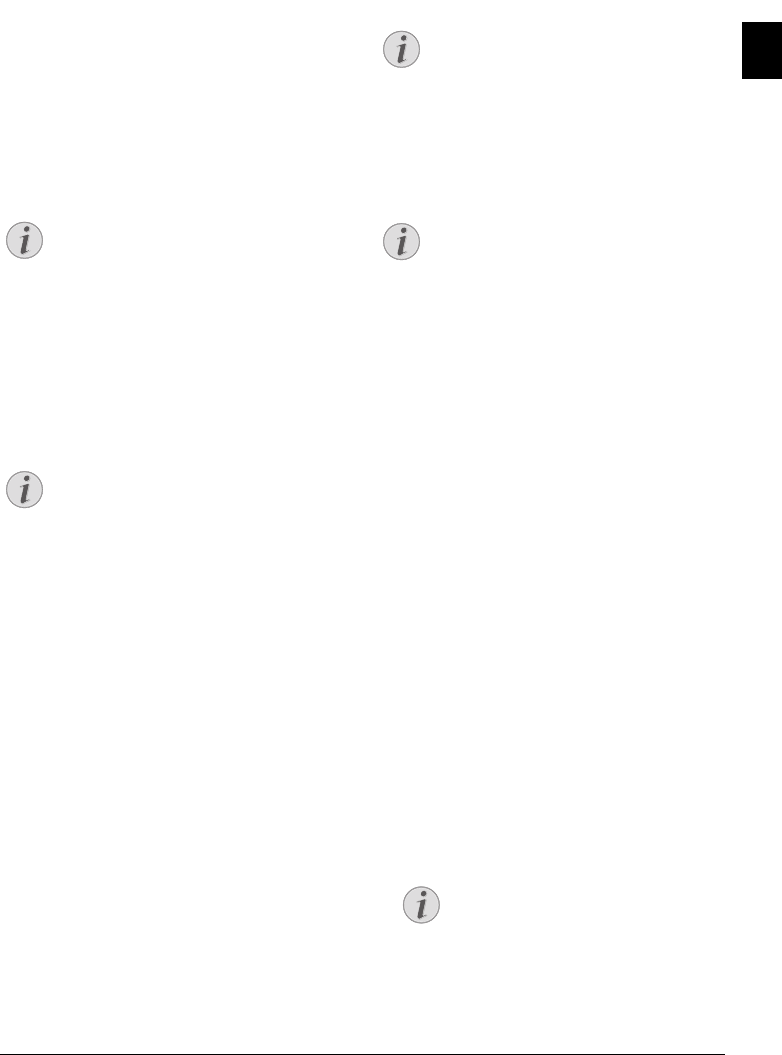
Telephone Functions · Placing a Call on the Device 17
EN
4 Telephone Functions
Type 3 (mit Telefon)
(LPF¦5125, LPF¦5135)
Connecting Additional Telephones
For information on how to connect additional telephones
and which functions are available to you, please refer the
chapter on Telephone Connections and Additional
Devices, Page 42.
Placing a Call on the Device
Dial the desired number. There are several ways to do this:
Then pick up the handset.
Direct Dialling
Manual Dialling: Dial the desired number using the
numeric keypad.
Telephone Book
Telephone book register: with the keys (A—Z) you
can access entries saved in the telephone book. Enter the
initial letters or the name of the desired entry. Your device
will show you the telephone book entries for the corre-
sponding letters. Select an entry using [.
Using the Telephone Book
Redial / caller list
Redial / caller list: The redial / caller list contains the
last numbers dialled and the last calls received (
© indicates
the numbers dialled,
® the calls received and * the calls
missed).
Getting Outside Line
PABX Systems
Private branch exchanges (PABX) are typical in many
offices and some households. You must dial an outside line
access code in order to get a connection to the public tele-
phone network (PSTN) from a PABX.
Inserting Outside Line Access Code
Enter the outside line access code with which you reach the
public telephone network before you enter the desired
number or select a stored entry. The outside line access
code is usually 0.
Incorrect Outsi de Line Access Code
Setting Up an Extension
Chain Dialling
You can combine and edit manually entered digits and
saved entries, before the dialling process starts. If you have
saved, for example, the telephone number prefix of an
inexpensive telephone service provider (call-by-call) as a
telephone book entry, select this entry and manually enter
the subsequent telephone number or select another saved
entry.
Insert Dialling Pause
Insert Dialling Pause
It may be necessary to insert a dial pause in telephone
number, for example, for a direct-inward dialling number,
a sub-address or in a long distance number. Press ú and
Rø. The second part of the number is dialled only after a
short pause.
Dialling with the Handset
Replaced
1 Press μ to dial without lifting up the handset. You
will hear the dial tone from the loudspeaker; the dial-
ling process will commence immediately. Select the
desired volume level using [.
2 Pick up the hand-set when the subscriber accepts the
call.
Spaltenumbruch
Notice
Direct Dialling
You can also lift up the receiver first, then dial a
number. The dialling process begins immedi-
ately.
Notice
Using the Telephone Book
You can also call the telephone book entries by
pressing am and select using [
SEARCH.
The function Search works even while you are
conversing on the telephone.
If you are loading entries from the telephone
book, it is possible to edit the numbers after you
have loaded them. For example, you can add or
delete prefixed numbers or direct dial numbers.
Notice
Incorrect Outside Line Access Code
In rare cases, the outside line access code may be
a different number or a two-digit number. For
older telephone systems, the outside line access
code can be R (= Flash). Press Rø to enter this
outside line access code. If the connection to the
public telephone network is not possible, con-
tact your telephone system supplier.
Notice
Connection to Private Automatic
Branch Exchange
If you operate your device permanently on an
extension, save the outside line access code (see
also chapter on setting Private Branch Exchange
(PABX) , page 42).
Notice
No Hands-free Operation Possible
Hands-free operation is not possible with
this function. You cannot answer if the sub-
scriber picks up.
lpf-5120-5125-5135-manual-uk-int-253117544-b.book Seite 17 Mittwoch, 16. Dezember 2009 10:01 10


















